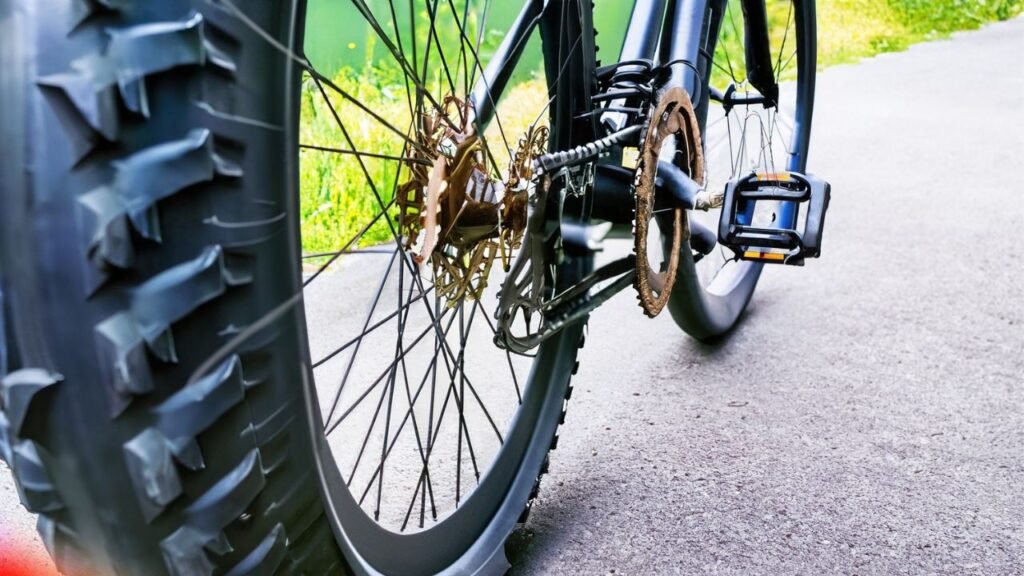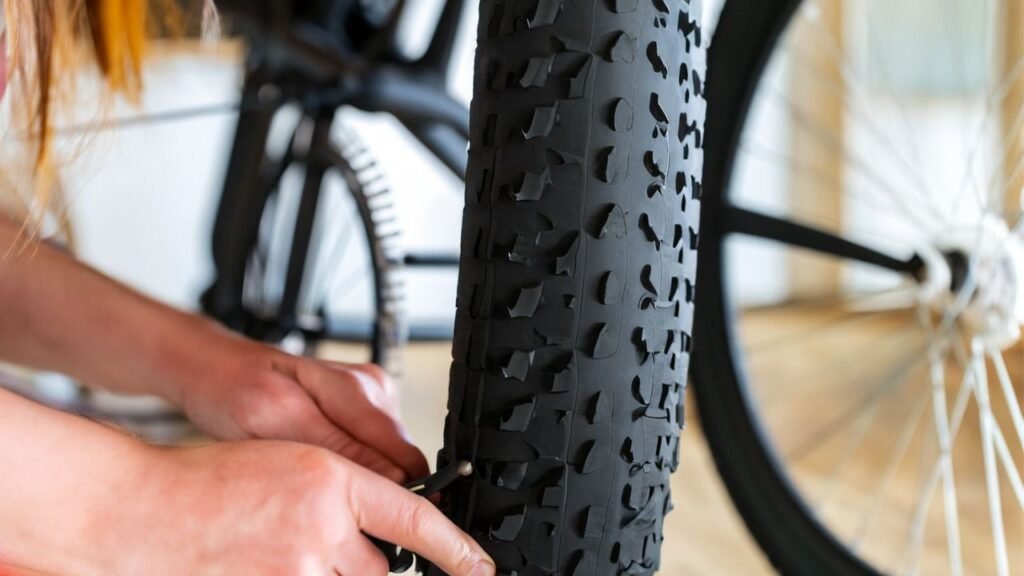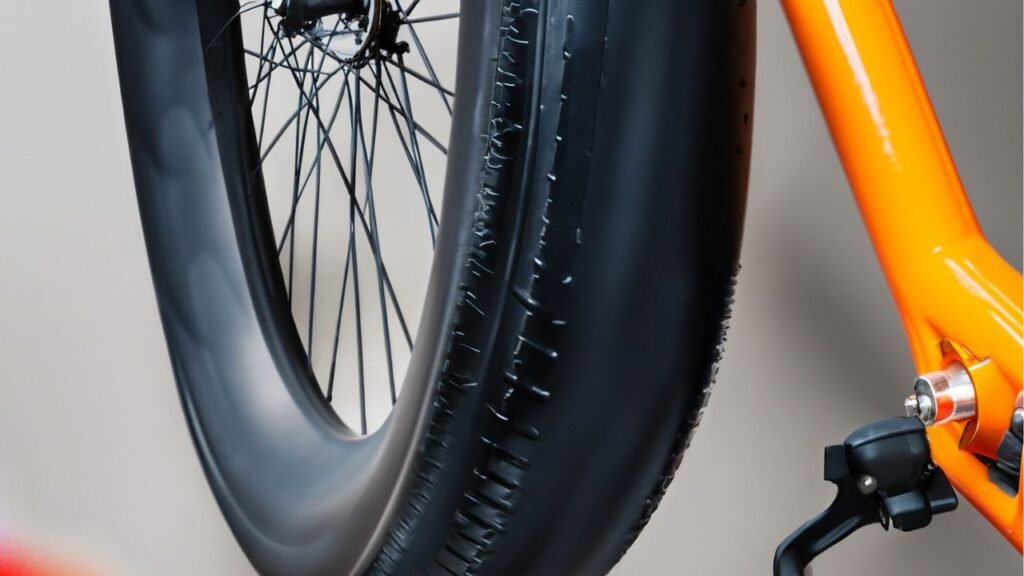Cycling has always been a popular outdoor activity and with the advent of fat tire bikes has become even more appealing. Bikes with fat tires are specially made to handle challenging terrain such as snow, sand and mud making them unparalleled commute for bikers. If you have a regular bike & want to upgrade it to a fat tire bike then you are in the right place! In this article we will discuss with you step by step guide on how to put fat tires on a bike so you can experience joy of fat biking.

Table of Contents
1. Why Choose Fat Tires? The Benefits and Advantages
Fat tires offer more benefits for riders making them the best choice for off road travel. The fat tire width provides durability and grip allowing cyclists to conquer a variety of terrains with ease. In addition, the increased air pressure in the fat tires provides natural suspension, reducing the impact on the rider. These tires also provide excellent traction on sand, snow, loose gravel & other surfaces opening up a whole new world of biking opportunities.

2. Gather the Required Tools and Supplies
To successfully install fat tires on your bike, you’ll need the following tools and supplies:
- Tire levers
- Wrench set
- Bike lubricant
- Fat tires (compatible with your bike’s frame)
- Inner tubes (compatible with fat tires)
- Bike pump
Ensure that you have all the necessary items before proceeding with the conversion process.
3. Preparing Your Bike for the Conversion
Before installing fat tires it is essential to ensure that your bike is in good condition and ready for the conversion. Clean your bike thoroughly and inspect it for any wear and tear. Check the frame, wheels, brakes and gears for any signs of damage or malfunction. It’s crucial to address any existing issues before proceeding with the conversion.
4. Removing the Old Tires
Using tire levers, carefully remove the old tires from your bikes wheels. Start by releasing the air from the inner tubes. Once the tires are deflated, insert tire levers between the tire and the wheel rim and gently pry them up until the tire separates from the rim. Repeat this process until both tires are removed.
5. Measuring Your Bike’s Frame Clearance
You are sure a proper fit it is important to measure the bike frame clearance. Fat tires require more space within the frame so measure the space between the forks or rear stays to determine if your bike can accommodate the wider tires. Refer to your bikes manufacturer or consult a bike shop if you are unsure about the clearance required.
6. Choosing the Right Fat Tires
Selecting the appropriate fat tires for your bike is crucial for optimal performance. Consider factors such as tire width, tread pattern and overall quality. Look for tires specifically designed for the type of terrain you intend to ride on. It is advisable to seek expert advice at a bike shop or conduct thorough research before making your final decision.
7. Installing the New Fat Tires
Place the new fat tires on the rims starting from one side. You should push the tire as far as you can onto the rim using your hands. Be cautious not to pinch the inner tube while installing. Once the tire is correctly positioned you use tire levers to carefully push the remaining portion of the tire onto the rim. Ensure that the tires are centered properly before proceeding.
8. Adjusting the Brakes and Gears
After installing the fat tires it’s essential to adjust the brakes and gears accordingly. Ensure that the brake pads align with the tire’s braking surface and make any necessary modifications to maintain proper braking performance. Similarly adjust the gears to ensure smooth shifting and accurate chain alignment. Test the brakes and gears before taking your bike for a ride.
9. Checking Your Bike’s Performance
Before embarking on your fat tire biking adventure perform a thorough check of your bikes overall performance. Test the responsiveness of the brakes, the smoothness of the gear shifting and the stability of the fat tires. Make any further adjustments if required.
Also Read: What are Fenders On A Bike and How Do They Protect You?
10. Maintenance Tips for Fat Tire Bikes
To keep your fat tire bike in optimal condition follow these maintenance tips:
- Regularly clean the tires and rims to remove debris and prevent tire damage.
- Follow the manufacturer’s recommendations for tire pressure.
- Lubricate the chain and moving parts to ensure smooth performance.
- Check the tire treads for wear and replace them when necessary.
- Inspect and tighten all nuts and bolts to prevent loosening during rides.

FAQs: About How to Put Fat Tires on a Bike
Q1. Can I put fat tires on any bike?
A: Fat tire installation depends on the frame clearance of the bike. Fat tires must be installed before the frame clearance is measured on each bike.
Q2. Do you need to make any adjustments to bike frame?
A: Typically no adjustments are needed to the bike frame when installing fat tires. However, it is essential to measure the frame clearance to ensure the tires fit properly.
Q3. Can I switch back to regular tires after installing fat tires?
A: Yes, you can switch back to regular tires if desired. Keep in mind that you may need to readjust the brakes and gears accordingly.
Q4. Are fat tire bikes suitable for road use?
A: While fat tire bikes are primarily designed for off road use they can still be ridden on paved roads. However fat tires may result in increased rolling resistance and slower speeds on smoother surfaces.
Q5. How do I choose the right tire pressure for fat tires?
A: The appropriate tire pressure for fat tires can vary depending on various factors such as rider weight, terrain and personal preference. Review the tire manufacturer’s recommendations and consider testing different pressures to find what works best for you.
Conclusion: About How to Put Fat Tires on a Bike
By following the step by step guide outlined above you can successfully convert your regular bike into a fat tire bike and unlock thrilling cycling experiences on various terrains. Remember to choose suitable fat tires, ensure proper installation and make necessary adjustments to your bikes brakes and gears. Before embarking on your first fat tire adventure, perform a thorough check to ensure the bikes overall performance. With proper maintenance your fat tire bike will bring you countless hours of unforgettable adventures.

